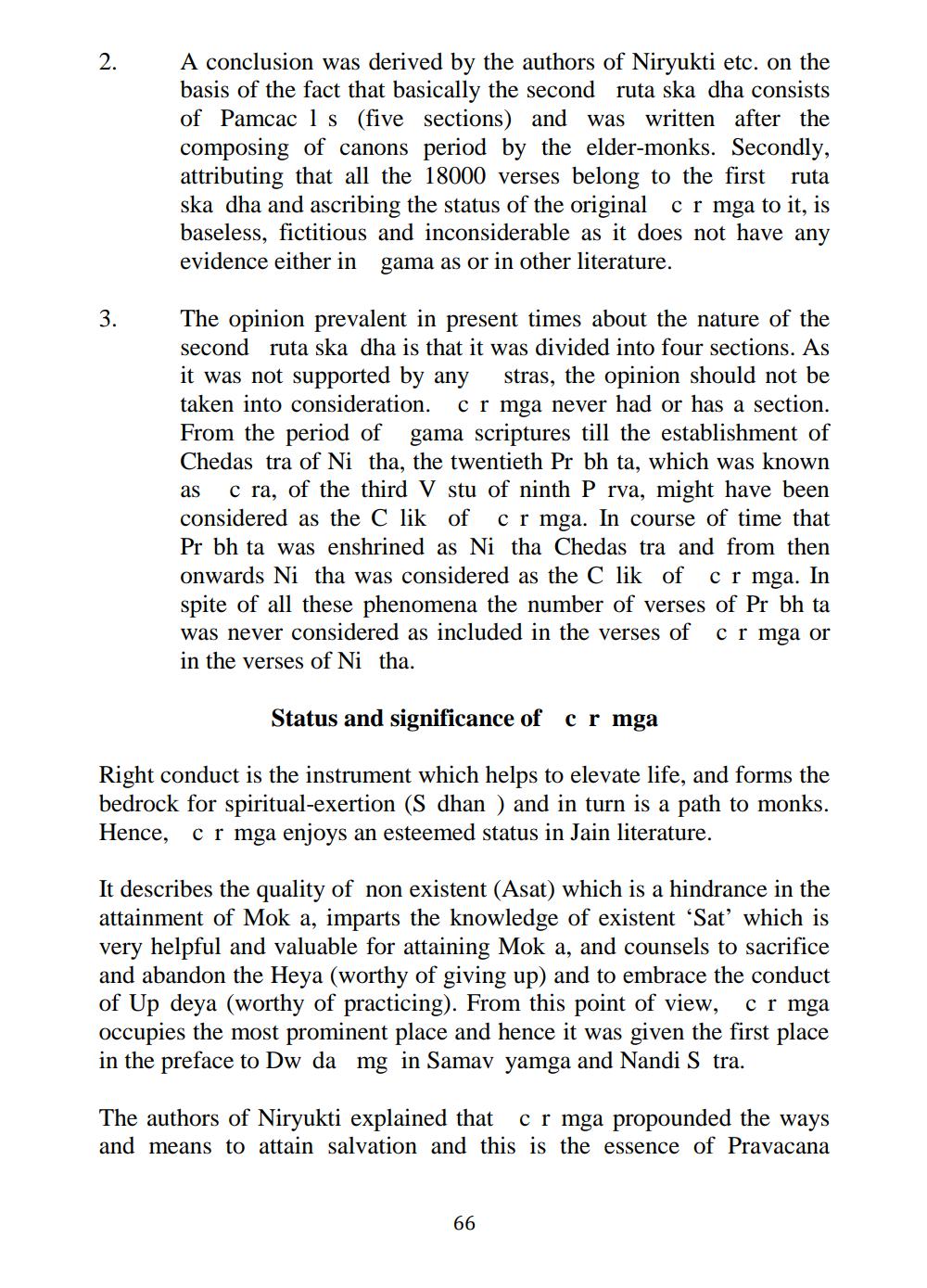________________
A conclusion was derived by the authors of Niryukti etc. on the basis of the fact that basically the second ruta ska dha consists of Pamcac ls (five sections) and was written after the composing of canons period by the elder-monks. Secondly, attributing that all the 18000 verses belong to the first ruta ska dha and ascribing the status of the original cr mga to it, is baseless, fictitious and inconsiderable as it does not have any evidence either in gama as or in other literature.
The opinion prevalent in present times about the nature of the second ruta ska dha is that it was divided into four sections. As it was not supported by any stras, the opinion should not be taken into consideration. cr mga never had or has a section. From the period of gama scriptures till the establishment of Chedas tra of Ni tha, the twentieth Pr bh ta, which was known as c ra, of the third V stu of ninth Prva, might have been considered as the Clik of cr mga. In course of time that Pr bh ta was enshrined as Ni tha Chedas tra and from then onwards Ni tha was considered as the Clik of cr mga. In spite of all these phenomena the number of verses of Pr bh ta was never considered as included in the verses of cr mga or in the verses of Ni tha.
Status and significance of cr mga
Right conduct is the instrument which helps to elevate life, and forms the bedrock for spiritual-exertion (S dhan) and in turn is a path to monks. Hence, cr mga enjoys an esteemed status in Jain literature.
It describes the quality of non existent (Asat) which is a hindrance in the attainment of Mok a, imparts the knowledge of existent 'Sat’ which is very helpful and valuable for attaining Mok a, and counsels to sacrifice and abandon the Heya (worthy of giving up) and to embrace the conduct of Up deya (worthy of practicing). From this point of view, cr mga occupies the most prominent place and hence it was given the first place in the preface to Dw da mg in Samav yamga and Nandi S tra.
The authors of Niryukti explained that cr mga propounded the ways and means to attain salvation and this is the essence of Pravacana
66




